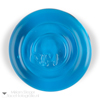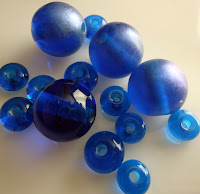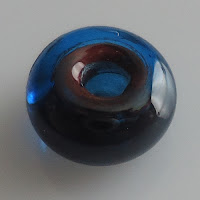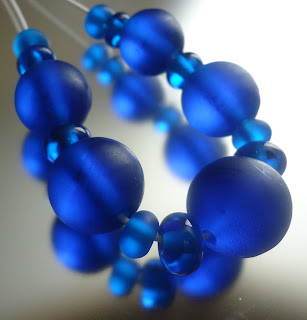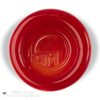This bead is etched encased Freeman tab with butterfly Murrini by Ryan Turner.
 I found that I had to treat Fremen very harshly by superheating for a prolonged period of time to get any sign of the surface sparkles and fizz that tells me the glass is boiling. Unlike with Pulsar though, there is no sign of surface pitting on my beads once they have cooled. Fremen is a wonderfully well behaved glass when I work it in a cool flame.
I found that I had to treat Fremen very harshly by superheating for a prolonged period of time to get any sign of the surface sparkles and fizz that tells me the glass is boiling. Unlike with Pulsar though, there is no sign of surface pitting on my beads once they have cooled. Fremen is a wonderfully well behaved glass when I work it in a cool flame.Tab focal with moth murrini by Charlotte Dakin-Norris.
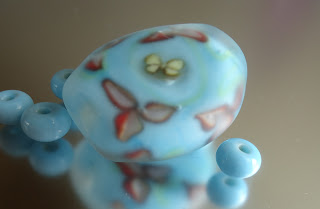 Fremen is described as an opaque sky blue - perhaps this is why I couldn't resist teaming it with fluterby murrini. The dreamy look of these beads means that encasing and etching Fremen is a combination I am sure to come back to over and over again.
Fremen is described as an opaque sky blue - perhaps this is why I couldn't resist teaming it with fluterby murrini. The dreamy look of these beads means that encasing and etching Fremen is a combination I am sure to come back to over and over again.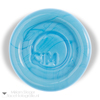
Jolene x
Kitzbitz
